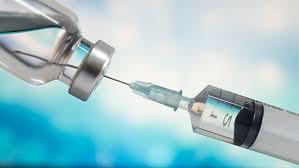Human Rabies Vaccines Market: Unlocking Global Potential for Disease Prevention
The human rabies vaccines market holds significant potential in the global pharmaceutical landscape, driven by the ongoing efforts to eradicate rabies, rising public health awareness, and the growing demand for both pre- and post-exposure prophylaxis. As governments, non-governmental organizations (NGOs), and international health agencies push forward with initiatives to control and eliminate rabies, the demand for effective human rabies vaccines continues to rise, creating vast opportunities for growth and innovation in the market.

Understanding Rabies and the Need for Vaccination
Rabies is a fatal viral disease caused by the rabies virus, primarily transmitted through the bite of an infected animal. Once clinical symptoms appear, rabies is almost always fatal. However, it is 100% preventable through timely vaccination. Human rabies vaccines are vital in two scenarios: pre-exposure prophylaxis (PrEP) for those at high risk (e.g., veterinarians, travelers, and researchers) and post-exposure prophylaxis (PEP) after a potential exposure.
According to the World Health Organization (WHO), tens of thousands of people die from rabies each year, with the majority of deaths occurring in Asia and Africa. The disease disproportionately affects children in rural areas, where access to vaccines is limited. This alarming statistic reveals the market's untapped potential and the crucial role human rabies vaccines can play in global health.
Market Size and Growth Prospects
The global human rabies vaccines market was valued at around USD 1.05 billion in 2023 and is projected to grow at a compound annual growth rate (CAGR) of 4.5% through 2030. Increasing investments in healthcare infrastructure, international collaboration, and innovations in vaccine production are expected to drive market expansion.
The forecasted growth is not just a reflection of increased demand, but also of expanding access to underserved populations. The WHO’s goal to eliminate human deaths from dog-mediated rabies by 2030 under its “Zero by 30” initiative creates a strong foundation for market development, especially in developing economies.
Key Drivers Fueling Market Potential
1. Public Health Initiatives and Global Goals
Numerous organizations, including WHO, GAVI, UNICEF, and the Global Alliance for Rabies Control, are investing heavily in vaccination campaigns and awareness programs. Their support ensures broader access and affordability, making it easier for pharmaceutical companies to enter and expand in emerging markets.
2. Rising Awareness and Education
As awareness about rabies and its preventability grows, more individuals are seeking vaccinations either before or after potential exposure. Educational outreach programs and increased media coverage of outbreaks also encourage vaccination uptake, thereby enlarging the market base.
3. Expansion of Travel and Pet Ownership
The rise in global travel, particularly to rabies-endemic regions, has led to increased demand for pre-exposure vaccinations. Simultaneously, the growth of pet ownership—especially in urban settings—contributes to heightened awareness and preventive health measures, boosting vaccine sales.
4. Technological Advancements in Vaccine Development
Research into improved formulations, such as intradermal vaccines, recombinant vaccines, and vaccines that don’t require cold chain storage, is opening new possibilities for mass immunization. These advancements can help overcome logistical barriers, particularly in low-resource settings.
Regional Potential
Asia-Pacific
This region holds the largest share of the global human rabies vaccines market, driven by high incidence rates in countries like India, China, and Indonesia. Increasing healthcare investments and support from international donors provide immense opportunities for expansion.
Africa
Africa has one of the highest rabies mortality rates but remains largely untapped due to infrastructural challenges. As governments collaborate with global health organizations, the region’s potential for growth is considerable.
Latin America and the Middle East
Improving health systems and international funding are enhancing rabies control strategies in these regions. This creates a favorable environment for market penetration and product adoption.
Opportunities for Industry Players
Pharmaceutical companies and biotech firms are poised to benefit from strategic investments in the human rabies vaccine market. Some of the potential growth avenues include:
-
Developing Thermostable Vaccines: These can withstand higher temperatures, reducing reliance on cold storage and making them ideal for remote regions.
-
Innovative Delivery Systems: Needle-free and intradermal delivery options can improve patient compliance and reduce vaccine costs.
-
Public-Private Partnerships: Collaborations with governments and NGOs can help manufacturers scale distribution and improve access.
-
Local Manufacturing: Establishing vaccine production facilities in endemic regions reduces costs and ensures faster delivery during outbreaks.
Challenges to Consider
Despite its potential, the market is not without hurdles. High vaccine costs, regulatory complexities, and cold chain requirements continue to pose significant challenges. Additionally, vaccine hesitancy, lack of trained healthcare workers, and political instability in some regions can slow progress. However, these barriers also present opportunities for innovative solutions and public-private collaboration.
Conclusion
The human rabies vaccines market stands at a pivotal point. With global initiatives aligned toward eradication, increased awareness, and technological breakthroughs, the market holds significant potential to transform public health outcomes across the globe. By capitalizing on these growth drivers and overcoming logistical and economic barriers, stakeholders can expand vaccine access, save lives, and tap into one of the most promising segments in the global vaccines industry.
- Art
- Causes
- Crafts
- Dance
- Drinks
- Film
- Fitness
- Food
- Games
- Gardening
- Health
- Home
- Literature
- Music
- Networking
- Other
- Party
- Religion
- Shopping
- Sports
- Theater
- Wellness


